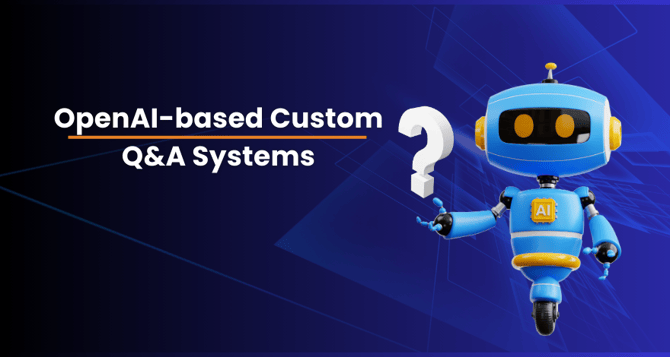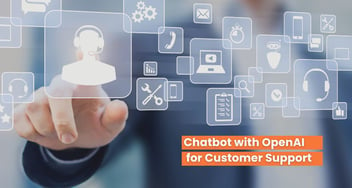OpenAI-based Custom Q&A Systems
These bespoke systems leverage the power of OpenAI's cutting-edge language models, ensuring adaptability and precision in addressing user queries. With a focus on customization, they enhance the user experience by delivering context-aware and accurate answers, making them a versatile choice for a wide range of applications.

In the ever-evolving landscape of Natural Language Processing (NLP), custom question-answering systems are becoming increasingly popular. These systems allow users to interact with machines in a more human-like way, and OpenAI's language models have played a pivotal role in making this a reality.
In this article, we will explore how to create custom question-answering systems with OpenAI language models, including detailed technical implementations.
Understanding Human-Created Language
One of the primary challenges in NLP is enabling machines to understand and generate human-created language. This involves processing and comprehending not just individual words but entire sentences and paragraphs, complete with context, nuances, and intent. OpenAI's language models, such as GPT-3 and GPT-4, have demonstrated remarkable capabilities in this regard.
Technical Implementation
Let's dive into the technical aspects of creating a custom question-answering system using OpenAI's language models:
1. Data Collection:
To train a question-answering system, you need a dataset containing questions and their corresponding answers. You can collect this data from various sources, including FAQs, and documents, or by crowdsourcing.
2. Preprocessing:
Once you have your dataset, preprocess the text to remove noise, correct errors, and normalize the text. This step is crucial for ensuring the accuracy of the model.
3. Model Selection:
Choose an OpenAI language model that suits your project's needs. For instance, GPT-3 and GPT-4 are powerful models known for their language understanding capabilities. Depending on the complexity of your project, you can choose the most appropriate model.
4. Fine-Tuning:
Fine-tuning the model is essential to make it specific to your task. OpenAI models provide a fine-tuning mechanism that allows you to train the model on your dataset. During this process, you can further customize it to understand your specific domain or language.
5. Integration:
Integrate the fine-tuned model into your application or platform. You can use OpenAI's API for this purpose. By making API calls, you can send questions and receive answers in real time.
6. Natural Language Processing:
When a user asks a question, preprocess the input, ensuring it's in a format the model understands. Send the question to the model using the API and wait for the response.
7. Post-processing:
Once you receive an answer from the model, you may need to post-process it to present it in a more human-friendly way. You can format and structure the response as needed.
8. Continuous Learning:
For long-term success, consider implementing a feedback loop where the system learns from user interactions. You can retrain the model periodically to improve its accuracy and relevance.
OpenAI's custom Q&A systems use cutting-edge language models, adapting responses for diverse user needs in customer support and education.
Example Use Cases
Here are some examples of custom question-answering systems powered by OpenAI's language models:
1. Customer Support Chatbots:
Companies use custom chatbots to answer customer queries on websites. The chatbot understands natural language and provides relevant responses.
2. Educational Q&A Platforms:
Custom systems are used in e-learning platforms to answer student questions. These systems can adapt to various subjects and levels.
3. Legal and Medical Assistance:
Question-answering systems can provide legal or medical advice by understanding and responding to user queries.
4. Content Generation:
OpenAI models can be used to generate informative articles by answering questions on a given topic.
Challenges and Future Prospects
While OpenAI's language models are incredibly powerful, there are still challenges to overcome. These include handling context better, improving model efficiency, and addressing biases. As models continue to evolve, it's essential to stay updated with the latest advancements.
In the future, we can expect even more accurate and human-like question-answering systems. These systems will play a significant role in making information more accessible and interactions with machines more natural.
Conclusion
Custom question-answering systems powered by OpenAI language models have transformed the way we interact with machines. They enable machines to understand and respond to human-created language, making them useful in various applications, from customer support to education and content generation.
Ready to Explore More About Our Solutions?
Get custom solutions, recommendations, estimates, confidentiality & same day response guaranteed!
By following the technical implementations mentioned above and staying updated with the latest advancements, you can build and enhance your custom question-answering system to meet your specific needs.













